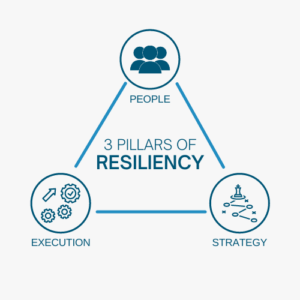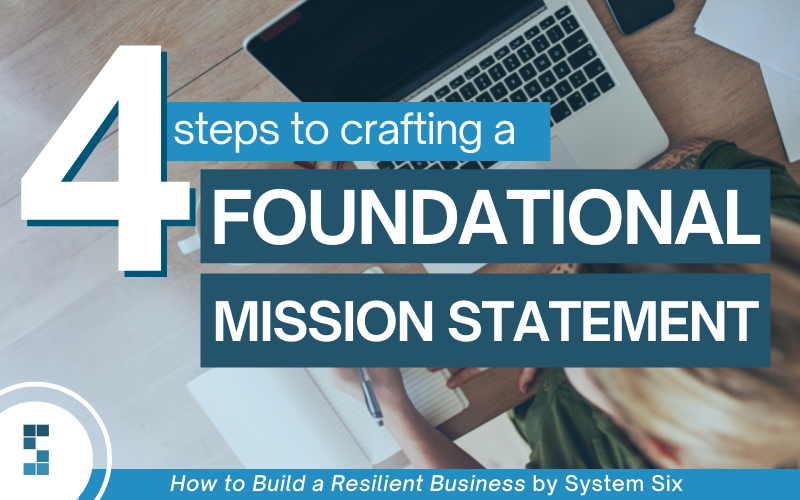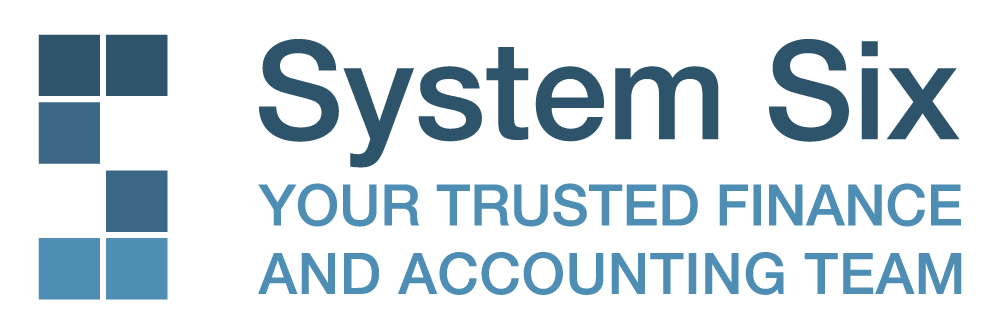
by Chris Williams | Sep 12, 2022 | Blog, Leadership
Annual Retreat for Our Remote Team
In late July, over 30 System Six team members and their partners gathered in Denver for several days of good old fun together! We all arrived on Friday at the beautiful Omni Interlocken Hotel, where the team spent the weekend enjoying the many wonderful things the resort had to offer – a great gym, a fun bar with pool tables, a driving range, great food and drinks, and of course, a ton of sun by the pool!
Friday night, we kicked off the weekend with dinner at Centro in Boulder – margaritas at dinner and to-go churros for our ride back to the hotel were especially big hits! Saturday, the team split up and went hiking, white water rafting, and museum exploring before reconvening for lunch. Several team members said they’ve now conquered their white water rafting fear and are looking forward to more challenging rapids next time! For lunch, we enjoyed cider, pretzels, and at the vista at Acreage by Stem Ciders. We finished just in time before the afternoon thunderstorms arrived.
We ended our weekend together on a high note – dinner at one of Denver’s hottest spots, the Happy Camper! Situated right in the middle of the restaurant, we cheered along as several adjacent groups celebrated birthdays, bachelorette’s and all kinds of joyful events!
While we packed in a lot of activity, we also were so thankful we had the chance to spend so much time together!
Being the Best Place to Work in Cloud Accounting
At System Six, our North Star is simple – to build the best place to work in Cloud Accounting. While we recognize we’ll never fully arrive at that goal, we are committed to always doing better. Our annual team gathering once a year is a joyful perk of working at System Six and provides us time to explore a new city, savor wonderful meals, and enjoy fun activities.
But, while we enjoy the time for it’s pure fun, our summer outings are even more powerful because of the connections we build with each-other. Especially in a remote environment, we know it takes time to get to know our peers and our managers, breaking the ice on Zoom meetings will never feel 100% natural; in person time is essential.
This is why our summer gatherings are so important, and why they’ll continue to be a priority of ours as we keep growing – we’ll just need more space next year! Of course our whole team can’t always attend, but we relish the opportunity to get to know one another, share some laughs (or screams on the river!), and to get perhaps just a bit too competitive at the pool table.
These small, unscheduled moments help us deepen our relationships, allowing us to better support each-other at work, solve problems faster, and appreciate one another more. It means virtual meetings feel a bit more natural when we truly know the person on the other side. All of these outcomes, we hope, make the day-to-day at System Six a bit more fun, joyful, and productive. Ultimately, we are building the best place to work in Cloud Accounting!
Many thanks to our team for making the trip this summer.We can’t wait to see you again next summer – in a location soon to be announced!

by Chris Williams | May 25, 2022 | Blog, Bookkeeping Best Practices, Leadership
Modern payroll is complex, covering everything from taxes to benefits to managing a variety of employees and contractors. As your remote finance team, we employ a robust tech-stack of cloud-accounting tools to streamline these exact payroll processes for you. These tools not only allow us to manage consistent, trustworthy compensation for your employees, but also provide best-in-class reporting capabilities and integrations with your accounting software.
But many may still be wondering, is outsourcing payroll really worth the investment?
If you’re a small business owner with only a few employees or have a history of managing payroll on your own, you’re probably hesitant to outsource this responsibility. Read on to see three ways that outsourced payroll provides value far beyond simply compensation management.
The Tax Arena
Paying employees properly is far more complicated than simply managing time, wages, and cash flow; you need to account for all of the complex tax details.
Outsourcing payroll includes offloading the coordination and liability of properly setting up and filing employees’ tax paperwork. System Six uses payroll specific tools like Gusto because, should a mistake or discrepancy arise in the tax filing process, Gusto takes on the responsibility of paying any fines and penalties associated with late or incorrectly filed returns.
With remote work growing in popularity and normalcy, registering employees for taxes isn’t simple. Small and big businesses alike employ remote workers across multiple states, cities, and municipalities. While this opens doors to valuable possibilities, it also creates new hassles in the onboarding process. In addition to differing tax codes, states have inconsistent implementations and descriptions of their rules and regulations. This can lead to confusion, mistakes, and possible penalties as you onboard employees.
When you outsource payroll, we ensure your employees are paid on time, but also partner with another firm, CorpNet, who assists with registering for tax accounts in states when you expand or hire in new areas of the country. CorpNet will communicate with each state on your behalf, ensuring that each state’s tax accounts are properly set up, submitting essential paperwork on your behalf.
Benefits Management
The second value-add of outsourced payroll tools is assistance with benefits management. A high priority for today’s workforce is the availability of benefits, including paid time off, insurance, and 401ks, just to name a few.
Just like tax registration can vary from state to state, benefit requirements vary also. For instance, certain states now mandate that all employees be provided paid time off, regardless of whether they are part-time or full-time. With remote work on the rise, employers may find employees working from states with varying PTO requirements.
Some outsourced payroll platforms have the capability of accounting for each state’s PTO requirements and codes. They can then track and manage PTO hours for employees, which is a huge time saver for business owners.
This is where we love using a tool like Gusto with our clients. Gusto offers both benefits packages through its own network of brokers and more recently added the ability to “bring your own broker.” This new feature allows its clients to reap the rewards of running benefits directly through the Gusto software while always maintaining a relationship with the broker of their choice.
While we’re singing Gusto’s praises, we need to mention a unique feature they now offer, the “Gusto Wallet” app. For the company with employees who occasionally request or find they need an advance on their paycheck, Gusto Wallet can be a lifesaver for employers and employees alike. Personally taking responsibility for and tracking advancements on payroll is risky and never advisable for business owners. With the Gusto Wallet app, however, employees can set aside monthly money from their checks that allow them to access emergency cash in between paychecks if the unexpected happens. Providing practical ways of making financial health a reality for employees is a huge benefit.
HR Tools & Support
The final added benefit is more robust HR tools. From advertising and managing job postings to job offers and onboarding to assisting with performance reviews, payroll platforms offer a lot of tools to help the modern business owner with HR responsibilities. For example, Gusto’s job postings integrate with popular job boards and their onboarding allows new employees to electronically sign custom documents, such as handbooks.
Some of these tools are newer to Gusto’s suite, and they can be a huge asset for businesses that need help getting off the ground and don’t have the necessary staff to take on all the HR functions themselves.
As a part of holistic client accounting services, we recognize the immense overlap between managing payroll and other elements of a healthy human resources department. Streamlining employee compensation goes hand in hand with caring for and supporting your employees. In simpler times, payroll was just a check every other Friday, but now payroll is intertwined with many facets of being an employer. Outsourcing this component of financial management is an incredible benefit to business owners; it allows them to focus on the business and not get lost in the financial complexities of PTO, benefits, family medical leave, and more.
Outsourced Payroll is for Everyone
These days it really doesn’t matter whether you’re a brand new start-up with just one employee or an established, multi-million dollar business – outsourcing payroll to a trusted partner is a great option for everyone. Simply put, the time, unnecessary costs, and headaches outsourcing saves employers are worth the costs.
So let’s talk – we are here to help companies set up and manage payroll as a part of our outsourced bookkeeping and accounting services. Whether you need to streamline your payroll processes, onboard employees across a range of states, or just need to get started with payroll, now is the time to integrate a fully tech-enabled set of financial systems to manage your business with efficiency and accuracy. And that will ultimately free you up to focus your time and energy on other priorities, like running their business, investing in their passions, or spending valuable time with family!

by Chris Williams | Mar 23, 2022 | Blog, Leadership
“Once upon a time, there were three little pigs…”
You probably remember this well-known and oft-repeated story from childhood storybooks and cartoons.
The three pigs each have a vision and mission – to build a house; a house resilient enough to weather the notorious big bad wolf’s destructive huffing and puffing. But while each pig has the same vision and mission, they each go about executing it in very different ways, which ultimately leads to very different outcomes.
It was Thomas Edison who once said, “Vision without execution is merely hallucination.”
It’s not enough to just have a clear vision and mission – you have to execute that vision successfully and to do that well, you need the right building blocks and tools.
If smart processes act as the bricks in resilient execution, then strategic, consistent rhythms are the mortar that holds those bricks together. Rhythms are the framework for getting the most value and efficiency out of your team’s processes.
Tools for Traction
Gino Wickman, author of the books “Traction” and “Get a Grip,” created EOS (Entrepreneurial Operating System,) which has become a popular tool to help businesses implement successful rhythms to keep their team cohesive, consistent and efficient. These rhythms “synchronize how people in an organization meet, solve problems, plan, prioritize, follow processes, communicate, measure, structure, clarify roles, lead, and manage.”
Utilizing an operating system of rhythms for your business promotes a culture of clear communication, discipline, and accountability. These values are integral to making your processes work effectively for your team.
While there are numerous areas in which a company could implement systemized rhythms, there are three areas in particular where successful rhythms really maximize the value of the processes most companies employ. These three areas are: meetings, measurement, and accountability.
Meeting Rhythms
Regular meetings within an organization are imperative in maintaining healthy and effective communication across teams and equally important for strengthening interpersonal relationships among team members.
While that might sound like just plain common sense, it is surprisingly easy to lose traction in communication and working relationships when rhythms aren’t in place to ensure meetings are consistent and intentional.
This is becoming increasingly true in a work culture in which remote employees are growing in number and co-workers on the same team can stretch across time zones and continents. Being intentional about regular rhythms of meetings is more important than ever.
Measurement Rhythms
You need rhythms to track various metrics and measurables within your organization to understand if you are accomplishing your goals and values.
Gino Wickman introduced the idea of the Scorecard Method in his book, “Traction.” Leadership must identify a set of measurements that can accurately indicate the health of your business. The correct metrics will be specific to you, but they usually include things like accounts receivable, customer survey results, cash on hand, and market penetration.
It’s essential to have realistic goals for these metrics and set a regular rhythm to measure and discuss them. They may also need periodic readjustment as your understanding of your business, customers, and goals shift over time.
Accountability Rhythms
There can be no real growth without accountability. Rhythms of accountability keep you on track to staying true to your company’s values as well as to your company’s goals.
Implementing tools like EOS’s scorecards keep employees accountable to the goals they have committed to, which leads to increased momentum and traction company-wide. Be cautious of two or more people sharing a responsibility; there’s a good chance that no one will end up with accountability.
Having processes and rhythms in place that allow your team members to give honest feedback is critical to maintaining a great work culture. They also help communicate clearly across teams which team members are accountable for specific tasks. A culture of healthy accountability is vital to fostering a great workplace culture.
A Strong Foundation Leads to a Resilient Future
The three little pigs each had a mission to build a resilient house, but in the end, only one pig’s house was strong enough to withstand the big bad wolf’s schemes. It was the house with a strong foundation, carefully laid with bricks and mortar, that proved the most resilient of all.
When it comes to building a resilient business, you need strong building blocks to lay a strong foundation. Those blocks are ultimately strategy, people, and execution. When you’ve got a solid mission and vision, the right people in place, and successful rhythms of scalable processes to execute your goals, your company is going to be strong enough to withstand any disruptions, adversity, and curveballs that come your way.

by Chris Williams | Feb 22, 2022 | Blog, Leadership
Attracting great talent is a key strategy to building a resilient business. Retaining that talent is equally important. The Great Resignation has opened our eyes to the importance of creating environments where employees can thrive. People aren’t only looking for robust retirement packages or attractive benefits portfolios; they want a strong company culture. Employee retention is at critical mass.
How does your team experience the place in which they work? Are they stressed and frazzled? Are their coworkers inclusive and diverse, or is it a competitive, homogenous environment? Do you actively support the work-life balance your employees desire? (Here are some signs your team is overwhelmed!)
A resilient work culture begins and thrives through attentive leadership that listens to their teams’ concerns and gives them the support they need to be successful.
Prioritize a Great Culture From the Start
All too often, unfortunately, companies confront their workplace cultures reactively instead of proactively.
Leadership coach and SSB client Aiko Bethea recently brought attention to this in her conversation about transformative workplace cultures with Brene Brown on the Dare to Lead podcast. “When something is important to you, and you value it, not only is it a priority, but it’s something you’re going to deal with intentionally.” Bethea goes on to say that companies often view priority through the lens of “yesterday” – reactively trying to fix issues instead of proactively working towards a better future.
Leaders who reactively rush into action to put out fires without being prepared or equipped can do more harm than good. Excellent workplace culture develops when employers intentionally support their teams from their first moments on the job.
Great Culture Starts With Onboarding
How you onboard new employees speaks volumes about how much you prioritize their success and well-being.
What will your employee’s experience be on the first day on the job? Is their equipment ready and waiting? Is essential login information for standard work programs like Zoom, Slack, and Loom prepared for them when they arrive on their first day? Have you fully briefed their coworkers and team about their role?
Whether you have people available to personally walk new employees through training, or you rely on technology and recordings to get your new team members started, it matters that there are resources and clear communication when you’re onboarding.
Great Culture is Strengthened Through Connectivity
Finding ways to make connections and build healthy working relationships are increasingly important to today’s workforce—employees who feel connected at work report higher states of well-being and job satisfaction.
With pandemic-related disruptions and the recent sharp rise in remote work, connectivity is increasingly challenging to cultivate.
The good news is that there are fantastic resources and technologies available today to make connectivity easy and enjoyable, even for remote teammates working in different time zones.
Implementing digital dashboards and similar tools, encouraging employee-led committees, carving out regular times for employee happy hours and social events – these are just a handful of simple ways to promote connectivity, and all of them can be done both in-person or remotely.
Websites like Confetti.com have a wealth of team-building activity ideas and tools if you need some help getting started. It’s important to note, however, that connection building needs to come from a genuine, authentic interest in the people who are on your team.
Great Culture Is Sustained Through Investing in Development
Resilient businesses treat their teams like people, not disposable resources. That’s why investing in your employees’ development is critical to creating a great work culture.
Rarely is someone content to stay in the same position and role for a lifetime. Employees want to learn, grow, and rise in rank. Consider offering regular educational and training opportunities to help your team acquire new skills and grow. Create a culture that celebrates development and advancement.
A resilient business’s goal should be to help its people grow into the seats they want. This takes intentionality, trust, and support; ultimately, good leadership. Listening and responding to your employee’s concerns and goals demonstrates empathy, compassion, and commitment. When employers invest in their development, employees feel more valued and loyal.
From setting them up for success on their first day on the job to cheering them on as they grow into the roles they want, you won’t regret intentionally investing in your team. Showing your employees you want them at your company is the best way to ensure they stay. Remember, their success is ultimately your success too.

by Chris Williams | Feb 9, 2022 | Blog, Leadership
The first pillar of building a resilient business is having a clear Strategy as defined in your mission, vision, and values. While you can have a stellar vision and business model, they are essentially worthless without the right people to come alongside you to make that vision a reality. Which brings us to the second pillar: People.
right people to come alongside you to make that vision a reality. Which brings us to the second pillar: People.
In his book “Good to Great,” Jim Collins compares his “who before what” concept to a bus. He asserts that the most successful, resilient businesses ensure they have the right people on the bus before figuring out where to drive it.
He writes, “The good-to-great leaders understood three simple truths. First, if you begin with ‘who,’ rather than ‘what,’ you can more easily adapt to a changing world…second, if you have the right people on the bus, the problem of how to motivate and manage people largely goes away…third, if you have the wrong people, it doesn’t matter whether you discover the right direction; you still won’t have a great company.”
Attracting and retaining the right people, however, is more complex today than in years past. A recent article in Fortune magazine reports a record-breaking rise in the rate of employees leaving their jobs in recent months, with 4.5 million quitting in November 2021 alone.
Disruptions and obstacles presented by a global pandemic play a big part in the phenomena of the “Great Resignation,” – but there’s more to the story.
Attract With Your Mission, Vision, and Values
A careful look at Google’s Year in Search 2021 Report reveals several insights into what is increasingly important to the workforce in 2022.
“Mental health” and “sustainability” were terms searched at record highs last year. “When is Juneteenth” and “pride events near me” were questions searched more than ever in the U.S. for the second year in a row.
These insights reveal that employees today are looking for more than just pay scales and flexible working options. More than ever before, employees want to work for businesses that care deeply about the health and well-being of their people. They want to work for companies that value diversity, equity, and inclusion; they want to work for organizations that are good stewards of our environment and planet.
Can you effectively articulate your vision and values around these and similar concerns when trying to attract employees? Are you thoughtfully incorporating them into your job listings, applications, and interview conversations? These are things to consider as you work to attract employees who are as invested in your “why” as you are.
Thoughtful Applicant Screening
Screening resumes to find the best talent for your business can be overwhelming, but there are strategies and tools you can implement to make sure the best candidates rise to the top of your list.
Don’t skip putting intentionality and thought into your job applications. It’s the first impression your applicants will receive of you, and it’s a great way to glean critical insights that can make your screening process easier and time-efficient.
Including strategically subtle questions on your applications is a way to engage the people applying for the job and screen out who is and who is not paying close enough attention.
From the get-go, an engaging, thoughtful application will expose the range of communication and detail skills of the people applying to work for you. This can be as simple as a fun question like “what’s your favorite color” to a more introspective question that engages what’s most meaningful to your applicants. Figure out what attributes are most vital to your company and find creative ways to pull that information out of your applicants from the very beginning.
Many companies will send applicants a take-home aptitude test to make sure their skills match the needs of your business. While this might seem to save you time, don’t underestimate the value of sitting down one-to-one with applicants to work on practical problems. Job shadowing gives you more precise insights into the applicant’s aptitude, personality, and communication strengths.
As your business grows, contracting an outsourced hiring company to help screen resumes can be an excellent investment, so long as you make sure to carefully and thoroughly interview those candidates whose resumes rise to the top. Outsourced recruitment can be immensely helpful for companies taking in large volumes of resumes and applications, but they won’t prioritize your vision and values as intentionally as you.
Your Business’ Most Important Asset
People are complex, and their values and needs are evolving as rapidly as our world, but people are ultimately your greatest asset. It is well worth the time and care required to ensure you have the right people on your bus before setting off for your destination.
By leading, attracting, and interviewing with your vision and values front and center, you will be laying the foundation of a resilient business that can weather the disruptions and changes of the future. Once you have found the people you want on your team, the next trick is retaining them. Join us next time as we unpack how to foster and invest in a culture that will keep employees for years to come.

by Chris Williams | Jan 25, 2022 | Blog, Leadership
This past week, BlackRock CEO Larry Fink released his annual letter to investors. As a leader of one of the largest global investment firms, his words are powerful, poignant, and directive.
He wrote, “It’s never been more essential for CEOs to have a consistent voice, a clear purpose, a coherent strategy, and a long-term view. Your company’s purpose is its north star in this tumultuous environment.”
A resilient business is a successful business. A resilient business is a profitable business. A resilient business adds value and is valued by its stakeholders. A resilient business knows why it exists.
When it comes to business strategies, you have countless books and experts to choose from, covering all manner of topics. There is one strategy, however, that applies to any business, whether you are in the startup stage or are already an established company. That strategy is a well-crafted, written mission statement that clearly articulates your business’ mission, vision, and values.
Don’t be fooled into thinking it sounds too simple to carry so much weight. A well-written mission statement that encompasses who you are and where you are going provides a solid, resilient foundation from which to grow and work. It allows you to weather unexpected, tumultuous years with rooted security and unified vision.
So, what makes a great mission statement? And how do you go about creating one?
Here are 4 steps to crafting a foundational mission statement.
1. Check out the mission statements from companies you admire.
It’s likely that the companies you admire most already have really great mission statements.
Understandably, it can feel overwhelming to take stock of all your business ideas and develop a concise, clear answer to the “why” behind it all. If you feel hesitant or just stuck in this area, it can be constructive to take a close look at the companies you admire and would like to emulate.
Study their mission statements and identify what questions they are answering. Can you distill their mission, vision, and values from their credos? What resonates with your company? What doesn’t? What words and phrases invigorate and inspire you?
A great mission statement will clearly answer the questions of what your mission is, what your vision is, and what your core values are.
If you respect and admire a company, you’ll likely align with its mission, vision, and values as well. Take time to research the statements of these companies for inspiration.
2. Get away with your team.
It’s not uncommon for professional writers to retreat from the distractions and familiarity of their home and office when they need to get an important project finished. Even if writing isn’t part of your profession, we believe that taking that same kind of intentionality when creating your business’ mission statement can be immensely helpful.
Consider taking your team on a “writer’s retreat.” Getting out of the office and into an environment of quiet and rest can provide the right kind of setting to get your team’s collaborative, creative juices flowing.
Ask your team questions like “where are we going?” “What values are most important to us?” “What mission are we trying to accomplish?” Getting away from your day-to-day environment provides the mental breathing room to dig into these more profound questions.
Don’t forget to take thorough notes because these conversations will form the foundation for your mission statement.
3. Rework, refine, and write it down.
There’s a big difference between having your great ideas articulated in your head and actually writing them down.
The process of writing forces you to wrestle with and fine-tune your ideas into their most essential, easily understood forms. Like a sculptor who chisels away at all unnecessary stone until the final sculpture emerges, editing helps you chip away all the excess thoughts and words until you are left with the purest, most clearly defined ideas you want to convey.
This is a process that can’t be rushed. It will take time, intentionality, and, most likely, many re-workings to get just right. It is easy to pile words around a concept; brevity is always the challenge.
This process is not a “one-and-done” practice, however. Plan to regularly visit your statements to ensure you stay true to your mission and values.
4. Infuse your mission statement into your business practices.
Once you’ve got your mission statement written down, it should become your business’ “north star” to follow. Your mission statement should be what you and your team turn to when questions or disruptions inevitably arise. Your mission statement should also attract your customers and future employees.
As an example, one of SSB’s core values has always been the tried and true golden rule: “do unto others as you would have them do unto you.” This value has acted as our north star since our startup season around a kitchen table in Seattle. To this day, it is still a value that we check ourselves by as we work to grow, attract customers, retain employees, and create a rewarding workplace culture.
If we are missing the mark with a core value, we know we are not on track with our company’s mission. Instilling these values in your business will require frequent, habitual integration into your rhythms. Talk about them in leadership gatherings, include them in onboarding procedures and employee onboarding, review them in team meetings. If they only live as an aside on your website, they won’t infiltrate your company’s culture.
As you consider strategies to help grow your business from startup to success in 2022, we can’t encourage you strongly enough to prioritize a well-crafted mission statement. It may sound like a simple strategy, but we guarantee every hour of intention and work you put into clearly defining your mission, vision, and values will pay dividends as you endeavor to build your resilient business.














 right
right 


